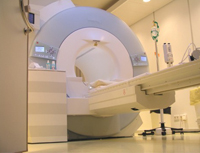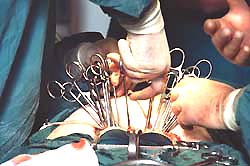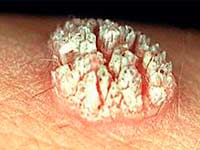Hodgkin's lymphoma is an oncological disease of the lymphatic system and is accompanied by an increase in lymph nodes. At the later stages of the disease, the spleen, lungs and liver. Treatment The disease is carried out by the combined method.
Content
Concept of Lymphoma Hodgkin
Hodgkin lymphoma is an oncological disease of the lymphatic tissue, characterized by an increase in lymph nodes and damage to various internal organs, in which uncontrolled accumulation occurs «Tumor» cells (lymphocytes).
Hodgkin lymphoma (or lymphogranulomatosis) is found only in humans and more often affects representatives of the White race. Lymphogranulomatosis may occur at any age. However, there are two peaks of morbidity - aged 20-29 years and over the age of 55. And men, and women, with the exception of children under 10 years old (boys are more often ill) sick lymphogranulomatosis equally often.
Basic symptoms of the disease
 The disease usually begins with an increase in lymph nodes against full health. In most cases, cervical or inspection lymph nodes are increasing, less often - armpit, inguinal and mediastinal lymph nodes. Increased lymph nodes to the touch painless and elastic.
The disease usually begins with an increase in lymph nodes against full health. In most cases, cervical or inspection lymph nodes are increasing, less often - armpit, inguinal and mediastinal lymph nodes. Increased lymph nodes to the touch painless and elastic.
The first symptom of the disease may be difficulty breathing or coughing due to pressure on light and bronchi increased lymph nodes, but most often the destruction of the mediastinum is detected on a random overview radiograph or tomogram of the chest.
Increased lymph nodes can be spontaneously decreased and increase again, which may result in diagnosis.
Common symptoms in patients with Lymphoma Hodkin are:
- Increased body temperature
- Night torrential sweating
- Weight loss and appetite
- Some patients have skin sebum all over the body
- Pain in the amazed lymph nodes (characteristic after receiving alcoholic beverages)
An increase in mediastinal lymph nodes is observed in the first and second stage of lymphogranulumatosis. The defeat of the spleen develops, as a rule, with later stages of the disease. The liver is affected only in the last stage of the disease. Defeat of the lungs is accompanied by a payroll pleurite (cluster of fluid in the chest cavity). Bone marrow damage is observed only in the last stage of lymphoma.
The main mechanism of the damage to the nervous system is the compression of the spinal cord roots in the breast or lumbar departments by compacted conglomerates of increased lymph nodes with the appearance of pain in the back, lower back.
Diagnosis of lymphoma Hodgkin
The diagnosis of lymphoma is included in the deployed blood and urine tests, including on the determination of oncomarckers (indicators of the oncological process in the body). Mandatory is the biopsy of the affected lymph node. Additional research methods are:
- positron emission tomography with isotopic scanning
- Computed tomography of neck organs, chest, abdomen and small pelvis
- Magnetic resonance tomography
- Penal or open biopsy of lymph nodes with their histological and cytological research
- Bone marrow biopsy
Methods for the treatment of lymphoma Hodgkin
The main methods of treatment with Limph Hodgkin are:
- chemotherapy
- radiation therapy
- Combination of chemotherapy and radiation therapy
- Chemotherapy with high doses of drugs with subsequent bone marrow transplant
As a rule, the majority of patients with Hodgkin's disease begin the first course of treatment in the hospital, and then, provided good tolerability of drugs, continue to receive treatment in outpatient conditions.
The forecast for lymphogranulomatosis of the first and second stage of Hodgkin's disease is relatively favorable and, as a rule, the disease reaches a long remission.
The most promising and effective method of treatment is combined chemical therapy, which allows you to obtain long-term resistant remissions (complete disappeared symptoms) for more than 90 percent of patients, which is equal to complete cure.









